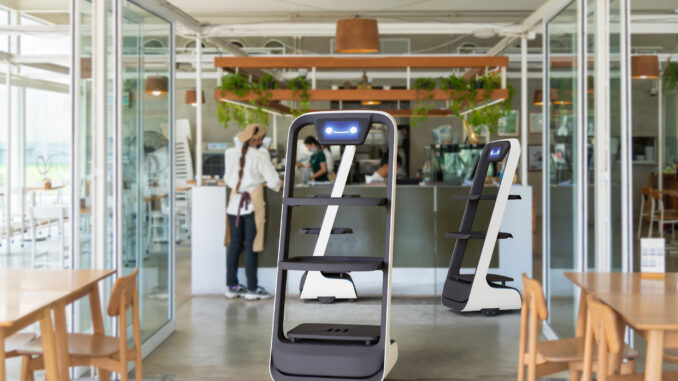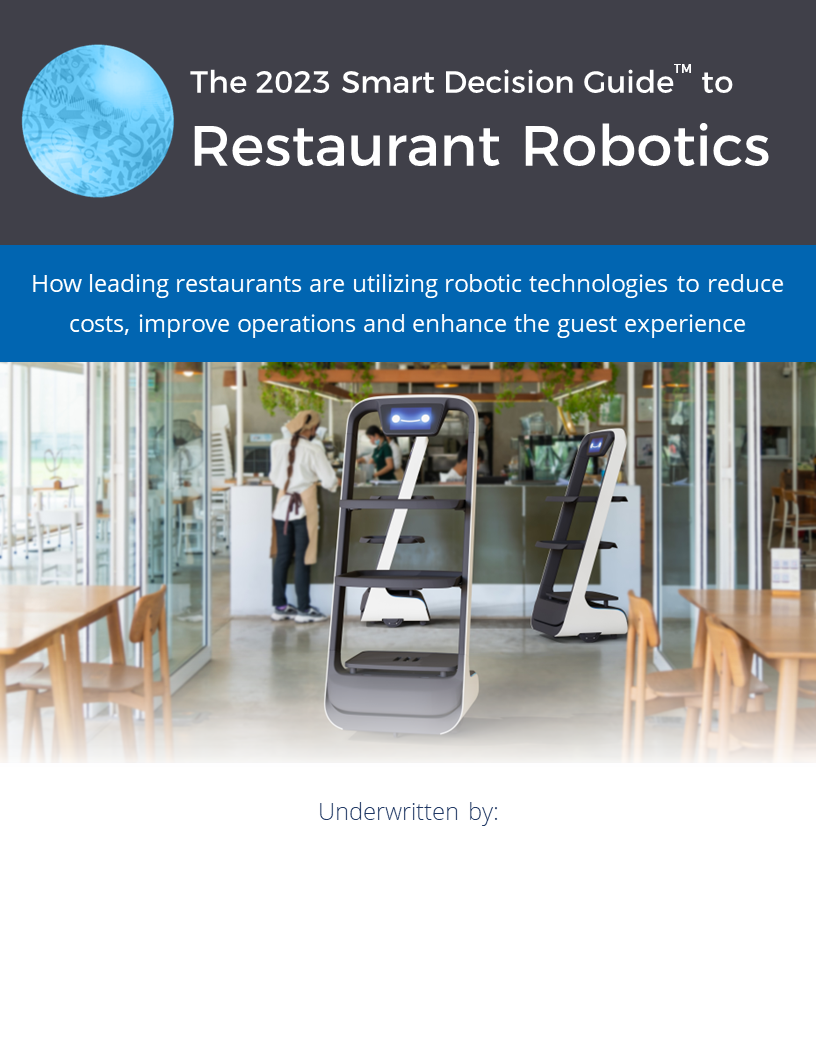
By Marv Allen, Sales Director, Starfleet Media - 9.29.2022
Robots have a long history in the restaurant industry, with the first known use of robots in restaurants dating back to the early 1960s. However, it was not until the early 2000s that robots began to gain significant traction in the industry, with a number of companies developing and commercializing different types of robotic technologies for restaurants. Since then, the list of restaurant robot solution providers, now dominated by companies like KEENON Robotics, Pudu Robotics, RichTech Robots and Bear Robotics, has grown exponentially as has the use of robots in restaurants.
There are a number of benefits that robots can provide across different restaurant function areas. For example, robots can be used for tasks such as cooking, cleaning, and dishwashing. They can also be used for more customer-facing tasks such as taking orders and payments, or even serving food and drinks.
One restaurant that has embraced robotics is YO! Sushi, a Japanese chain with locations in the UK, US, and Australia. YO! Sushi was one of the first restaurants to introduce conveyor belts carrying sushi dishes, and they have now taken things one step further with their robot servers. The robots, which resemble small cars, travel along the conveyor belt delivering sushi to guests. They are equipped with sensors that help them navigate around obstacles, and they can even say a few phrases in Japanese to engage with guests. The results have been impressive: not only do the robots improve efficiency by delivering food more quickly, but they also add an element of fun and excitement for guests. In a competitive market like the restaurant industry, anything that can give a business an edge is worth considering.
And indeed, robots can provide a number of benefits to restaurants, including increased efficiency and productivity, improved safety and sanitation, and enhanced customer service. In addition, robots can help to free up employees for other tasks, or even allow businesses to operate with reduced staffing levels. Robots can be used to cook food more evenly and quickly than human cooks, and they don’t need breaks or vacations. In addition, robots can be programmed to handle other tasks such as taking orders, cleaning tables, and even greeting guests. Several companies have developed robots that can navigate through crowds and deliver food orders quickly and efficiently. In some cases, these robots have even been able to provide a more personalized experience by engaging with customers and answering questions about the menu. The results have been impressive, with many restaurants reporting higher customer satisfaction ratings and increased sales.
However, there are also a number of challenges and obstacles related to the use of robots in restaurants. For example, robots can be expensive to purchase and maintain, and they may require specialized training for employees to use them effectively. In addition, there are also a number of regulatory hurdles that need to be overcome in order to deploy robots in restaurants.
There was a vast array of next-generation technologies on display at this year’s National Restaurant Association show, which took place in May at the McCormick Convention Center in Chicago. But no technologies made a bigger splash than the robots that were whirling and twirling around the exposition floor. Read more.
Despite the challenges, the use of robots in restaurants is growing at a rapid pace. A number of restaurant chains have already adopted robots for different tasks, and the trend is expected to continue to grow in the coming years.
There are a number of factors driving the growth of robotics in restaurants. For example, the increasing labor costs associated with running a restaurant business is one of the main drivers of adoption. In addition, the ever-increasing competition in the restaurant industry is also forcing businesses to look for ways to improve their operations and differentiate themselves from the competition.
The future of robotics in restaurants is likely to see further growth and adoption across different restaurant function areas. In addition, the use of robots is also likely to become more commonplace in other industries such as healthcare, retail, and logistics.
 How top-performing restaurants are utilizing robotic technologies to reduce costs, improve operations and enhance the guest experience is the focus of a new Smart Decision Guide, scheduled to publish in January 2023. The 2023 Smart Decision Guide to Hotel Robotics, produced by Starfleet Research based on best practices IT market research, is currently in development. Underwriting partners have not yet been announced. If you are a related technology solution provider and you wish to learn about the opportunity to participate as an underwriter, with benefits that include a turnkey content marketing and lead generation program, please contact Marv Allen at Starfleet Media.
How top-performing restaurants are utilizing robotic technologies to reduce costs, improve operations and enhance the guest experience is the focus of a new Smart Decision Guide, scheduled to publish in January 2023. The 2023 Smart Decision Guide to Hotel Robotics, produced by Starfleet Research based on best practices IT market research, is currently in development. Underwriting partners have not yet been announced. If you are a related technology solution provider and you wish to learn about the opportunity to participate as an underwriter, with benefits that include a turnkey content marketing and lead generation program, please contact Marv Allen at Starfleet Media.

